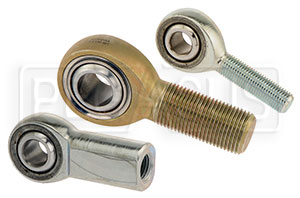Pegasus Rod End Technical Page
The options for rod ends always generates a lively discussion, here is a good starting point from the Pegasus web site: https://www.pegasusautoracing.com/document.asp?DocID=TECH00111&utm_source=201502-2&utm_medium=email&utm_campaign=201502-2

